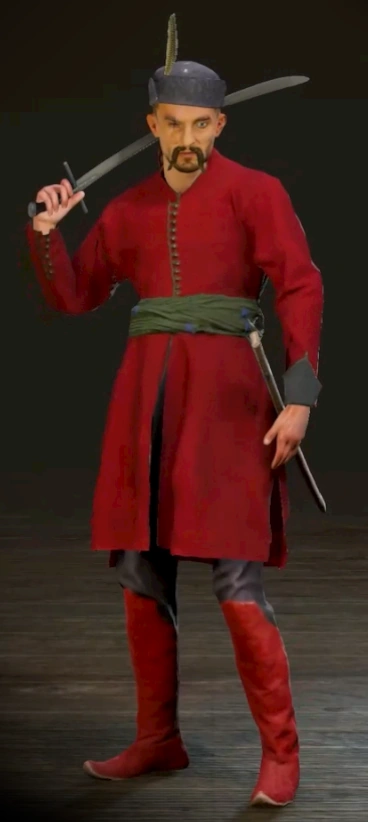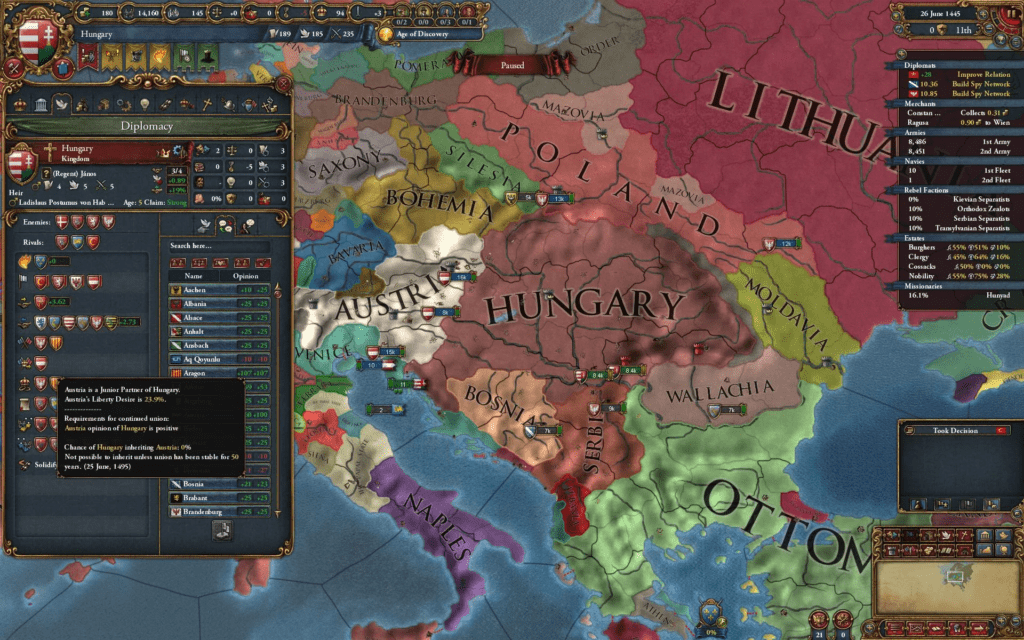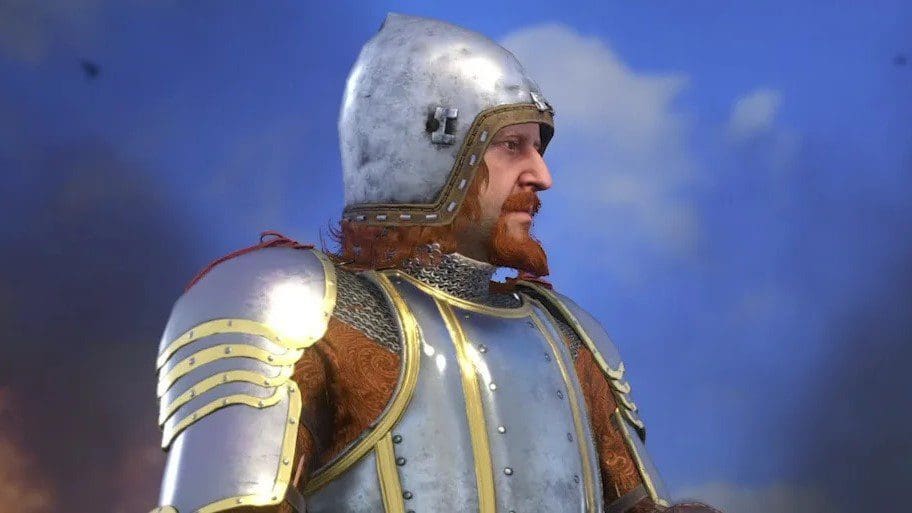Video games constitute a significant facet of culture, and their global impact cannot be ignored—globally, there are approximately 3.09 billion active video game players. Within popular culture—and video games can be classified as such—, we often encounter prevalent tropes used to represent various nationalities. Representations that reach such large audiences can shape public perception and the understanding of the countries in question. In some cases, this influence can be so formidable that it has the potential to overshadow actual reality.
However, these tropes and depictions are neither very obvious nor set in stone when it comes to smaller countries. Therefore, it is interesting to ponder—how is Hungary portrayed in this realm, and which games feature its people, language and culture?
When discussing this topic, it is hard not to mention a game which is among the most prominent representations of Hungarians, named Kingdom Come: Deliverance from the Czech-based Warhorse Studio, released in 2018 and winning multiple awards ever since, including the best PC game and the best Central and Eastern European Game awards.
The story of the game is set in Bohemia in 1403, when the Hungarian king Sigismund kidnapped his half-brother, king Wenceslaus IV,
and a war in Bohemia broke out. The player, impersonating Henry, the son of a Bohemian blacksmith, explores the facts-based and incredibly detailed virtual world of medieval Central Europe, trying to stop the Hungarian invasion and avenge his family.
Although the Hungarians—to be precise, Hungarian Cumans, whom we have also covered in several articles—are the enemies in the game, as the player acts on behalf of the Bohemians, these enemies are incredibly iconic, characteristic, colourful and interesting, playing a pivotal role in the gameplay. A notable feature of the game’s mechanics hinges on the incomprehensibility of the Hungarian language—you have to try to ambush your foe or sneak into an enemy base when you have no idea what your enemy is planning or talking about! Since the game is very realistic, encountering even just a couple of armour-clad Cuman warriors is no joke. Although Sigismund of Hungary himself is featured only in a cutscene, his nobleman, Istvan Tóth, appears on the screen as the main antagonist throughout multiple quests, especially closer to the end of the story.
The game is worth checking out for those who appreciate a combination of both decent historical accuracy and a good storyline. Historical-based fencing techniques, the Central-European cultural landscape of the 15th century, the need to sleep and eat to sustain your character and many other things make the experience amazing for those who value realism and plausibility in games.
[Kingdom Come: Deliverance] Henry Tries Speaking Hungarian
From the quest “Nest of Vipers”.
Hungarians are an indispensable part of European and particularly Central-Eastern European history. Therefore, it’s not uncommon for other historically accurate games whose plot is set in this region to incorporate Hungarian elements into their narratives. The Polish game developer Kubold in his fencing simulator Hellish Quart introduced a character named Laszlo (also known as Hajdu, referring to 17th-18th century Hungarian armed cattle herders). Kubold made him wield the Hungarian sabre and wear hajdú clothing, thus incorporating Hungarian culture and weaponry into the game, too—for more on the subject, read our article about Hungarian sabre traditions. Also, this game features the fokos, the iconic Hungarian commoner weapon we also covered earlier.

The game is akin to the previous one in the sense that it features a very high level of historical accuracy. Nevertheless, it deviates in one significant aspect: as it functions primarily as a fencing simulator that aims to recreate actual fighting techniques in a 17th century setting, there is hardly any plot in the game. However, the fighting characters, weapons, clothing and locations are authentic, so for any enthusiast of that period and East-Central Europe area it is very much recommended to try the game. For historical fencing practitioners, it is not just a recommendation, it is most certainly a must, since the game’s fighting system is based entirely either on recreations of fighting techniques or on fencing manuals from that time.
The next game genre that Hungary undoubtedly has a strong presence in is strategy games. Noteworthy is the example of Paradox Interactive games, a studio that releases grand strategy games, the central concept of which is that the player assumes control of a nation, country or dynasty, and becomes able to govern the country, manage its internal and external affairs, as well as wage wars. The Crusader Kings game series covers the medieval era, Europa Universalis focuses on renaissance and early modernity, whereas Hearts of Iron primarily revolves around World War II. These games try to immerse players into somewhat historically plausible scenarios, and the gameplay mechanics of each respective game series tries to reflect the historic circumstances of the time. In all the games, of course, an option for playing Hungary is present, and the player can run the country as one of its historical characters.

While Paradox games are known for their meticulous historical accuracy, the developers of the Civilization game series take a more relaxed and jolly approach. They seamlessly blend various historical eras to capture the essence and cultural flavour of the countries you can choose to play as. The expansion pack Civilization VI: Gathering Storm features Hungary as a playable nation, led by Matthias Corvinus as its leader. In the game, Hungary possesses a unique ability known as ‘Pearl of the Danube,’ which accelerates the construction of buildings and infrastructure along the river. Additionally, Hungary’s unique national building is the thermal bath, which grants additional advantages when constructed. Among other unique skills and abilities, players have the capability of deploying Hussars and the renowned Black Army of Matthias Corvinus, thanks to his exclusive ability, ‘The Raven King’. All of the aforementioned series are good quality products, with the Civilization series are one of the most influential in the realm of strategy games.
Unquestionably, in computer games, Hungary is portrayed as a nation with distinctive cultural traits and a unique history. Interestingly, however,
Hungary’s presence in video games isn’t limited to its past; it also extends into the far future.
For example, Hungarians are present in the Halo universe and the eponymous game series are set in the 26th century, where a united humankind colonises multiple worlds in space only to stumble upon an alien alliance hostile to Humanity. In one of the games, namely Halo: Reach, the population of the planet Reach consists of settles of Hungarian origin who speak Hungarian throughout the game’s quests. During the mission, one of the settlers exchanges a couple of words in Hungarian with the soldier named Jorge (in this particular instance, the game would benefit from native voice actors). The latter character is also of Hungarian origin and was born in Pálháza, a human colony on the planet of Reach. The planet is covered with many other towns and cities named after or inspired by real Hungarian places, such as Visegrád Relay.
Although in the latter instance Hungarian characters were not voice acted by native speakers, in the trailer to Halo 3: ODST, the Hungarian voice acting is much better. It showcases the beginning of Tarkov’s military carrier. Tarkov, a character from the Halo, is also a descendant of Reach. Hence the Hungarian language of the members of the Human military and of the instructors shown in the trailer. Although he apparently has a Slavic surname, this does not subtract from the credibility of the story, as certain mixes of cultures is to be expected in the 26th century.
The Halo franchise has enjoyed immense commercial success and critical acclaim, showing high overall sales.
A peculiar place in this realm is occupied by games related to the Star Wars franchise—read our article about Hungary’s contribution to the development to this fictional universe. In various products within the franchise, for some reason, the authors and developers of this setting make multiple alien species occasionally converse in Hungarian. Take, for example, Professor Larcoh, a member of the Selkath species who appears in Star Wars: The Old Republic. While his Hungarian speech is distorted by sound effects and doesn’t align with what he is actually meant to be saying, it remains a fascinating and curious detail worth mentioning.
It can be confidently argued that the salient presentation of Hungary in computer games is a sign of its recognition and the country’s importance for the world’s culture, and it can also contribute to a wider awareness of Hungarian history, culture and people.








